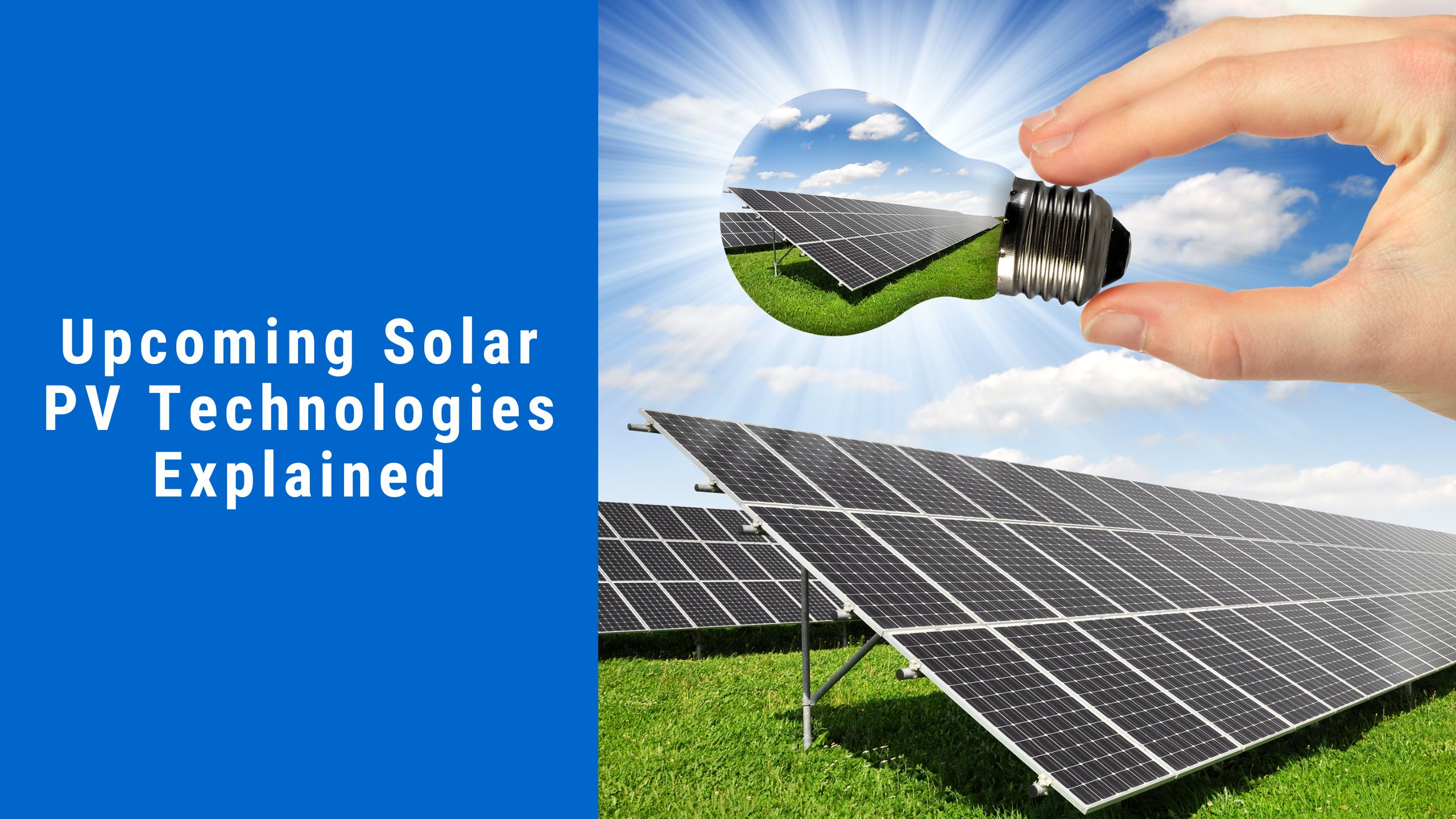The world of solar energy is changing rapidly, with new technologies emerging that can change how we use the sun’s power. You might already know about the popular solar panels, such as monocrystalline and polycrystalline, but now more advanced options are coming up that promise higher efficiency and more flexibility.
Imagine solar panels that can convert even more sunlight into electricity, that can be painted onto different surfaces, or are flexible enough to use in wearable devices. In this article, we will discuss three of the most exciting solar PV technologies, Tandem Solar Cells, Quantum Dot Solar Cells, and Organic Solar Cells, which are shaping the future of renewable energy in a big way.
Tandem Solar Cells (Multi Junction Solar)
Today, the PV market is mostly filled with Single-junction solar cells like Polycrystalline, Monocrystalline, Bifacial, and TOPCon. These are all examples of single-junction cells. But wait, wait, wait—what exactly is a Single-Junction solar cell? Well, Single-Junction simply means it has only one P-N junction semiconductor.
But why are we talking about single-junction cells? Because all Single-junction solar cells face one major limitation known as the Shockley-Queisser Limit, which states that the maximum theoretical efficiency of a silicon-based single-junction solar cell is around 32-33%. But why is it capped at 32-33%?
It’s due to the single junction itself. Simply put, it’s like trying to pour 20 liters of water into a 500ml bottle—the bottle can only hold 500ml, and the rest is wasted.
Similarly, despite having an abundance of available photons, a single-junction cell can only absorb the energy the band gap requires. Photons with energy greater than the band gap only move one electron into the conduction band. Any excess energy is mainly lost as heat. This is where the idea of Multi-Junction solar cells comes in.
How Tandem Solar Cells Work?
Tandem solar cells are a subtype of the multi-junction solar cell. They consist of more than one layer. The top layer, with a higher band gap, absorbs the higher-energy photons while transmitting the lower-energy light to the layer underneath. The lower layer, with a narrower band gap, absorbs this transmitted light energy. As a result, tandem solar cells can achieve a power conversion efficiency (PCE) of up to 40%.
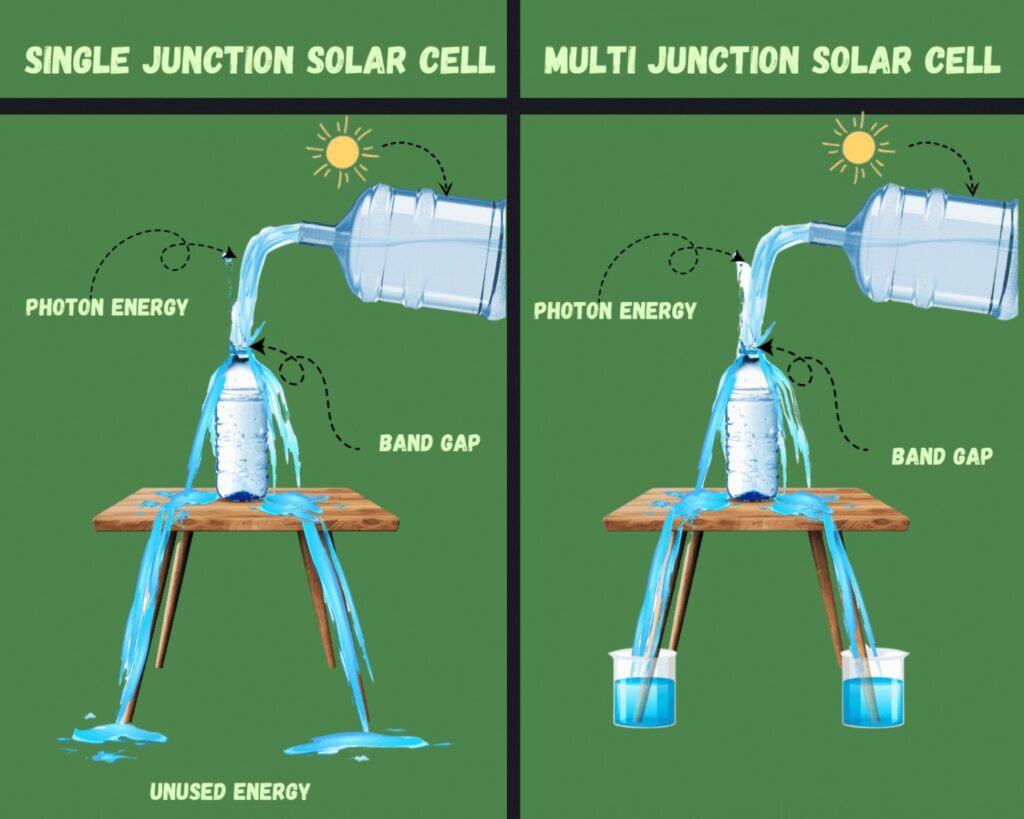
Current Status: The commercialization of perovskite-silicon-based tandem solar cells is expected to advance over the next 4 to 5 years, overcoming challenges related to the integration of sub-cells, thermalization losses, and the development of efficient deposition technologies. Companies like Oxford PV are at the forefront of these efforts. If successful, these tandem cells could transform the global solar energy landscape by offering significantly higher efficiency at a competitive cost.
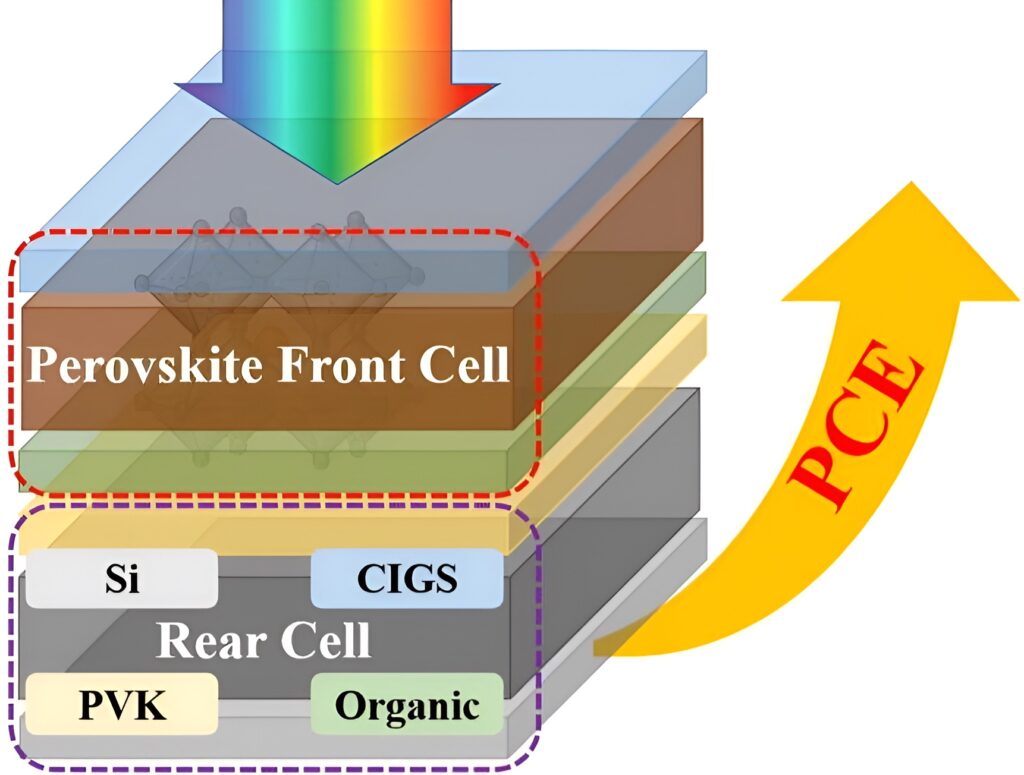
Quantum Dot Solar Cells: Tiny but Mighty
This small dot 👉 ● on your screen can contain up to 1,000,000,000,000 quantum dots! Isn’t that amazing? Let’s talk about these tiny, mighty quantum dots.
What exactly is a quantum dot? It is a nanometer-scale semiconductor particle with quantum mechanical properties. These quantum dots are special because they can be “tuned” to absorb different colors of sunlight just by changing their size.
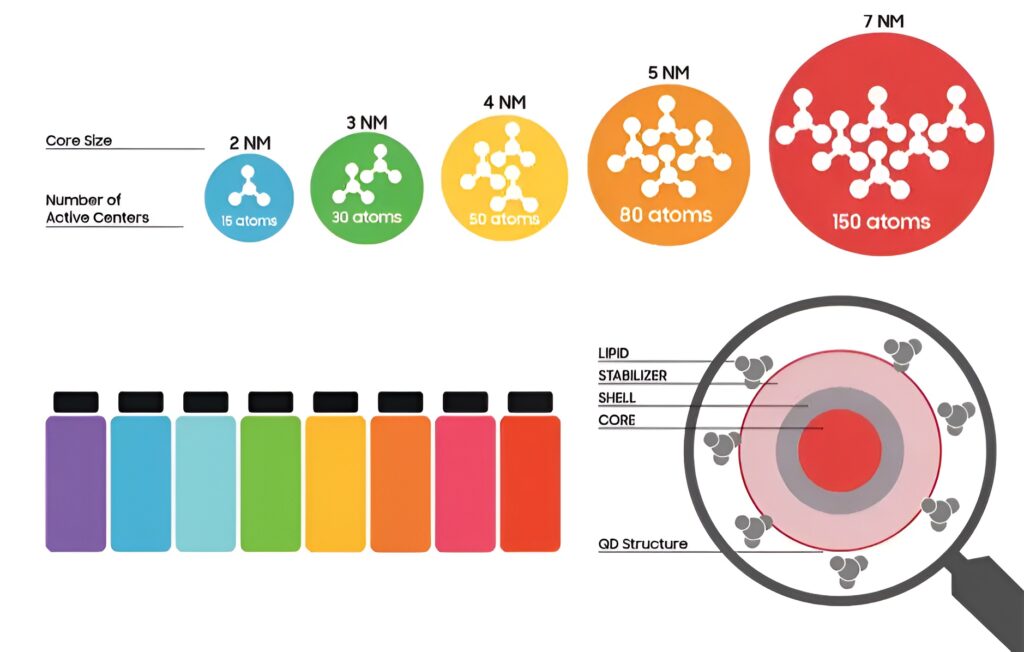
Actually, quantum dot technology has been in TVs for years, so why isn’t it already in my solar panels? Well, there are some challenges!
How Quantum Dot Solar Cells (QDSCs) Work?
Think of sunlight as a bunch of tiny marbles (photons). When these marbles hit a quantum dot, they shake things up, bumping an electron out of place and creating an energy “gap”. That excited electron needs somewhere to go, so it jumps into a neighboring material, generating an electric current — and that’s how we get electricity from sunlight.
But here’s where quantum dots go beyond traditional solar panels: they can generate more electricity from a single photon. In a normal solar panel, one photon knocks loose one electron. But in QDSCs, one photon can shake out multiple electrons. It’s like getting a bonus energy round, making them potentially more efficient. The National Renewable Energy Laboratory (NREL) calculated the theoretical max efficiency of quantum dot solar cells (QDSCs) at a staggering 66%, which is even more efficient than multi-junction solar cells.
To make these solar cells, scientists sprinkle quantum dots onto a material like titanium dioxide (TiO2), the principal conductor of electricity. Different methods are used for this. The potential for quantum dot solar cells is enormous because they can be made cheaply, flexible, and even painted onto surfaces.
Current Status: Recent breakthroughs have improved their performance significantly, pushing them closer to real-world use. However, the road to commercialization isn’t without bumps. Challenges like ensuring these cells remain stable in various environments, scaling them up for large installations, and competing with well-established silicon solar panels stand in the way. More research is needed to make them durable and cost-effective enough for the market. However, once these hurdles are cleared, QDSCs could offer a more flexible and affordable alternative for the solar energy industry.
Organic Solar Cells: Flexible and Transparent
After the global pandemic, people have become more conscious about their health and the environment. Words like “organic” have entered our daily conversations, whether it’s about organic food, skincare, or household products. But did you know that “organic” is also making waves in the world of technology?
Organic solar cells—a green, innovative solution that’s bringing solar energy to the next level! When you hear the word organic, you probably think of something natural, healthy, or related to nature. In the same way, organic solar cells use natural, carbon-based materials to generate energy. Unlike traditional solar cells that rely on heavy, rigid silicon, organic solar cells are lightweight, flexible, and easy to produce. Think of them as the eco-friendly version of solar panels.
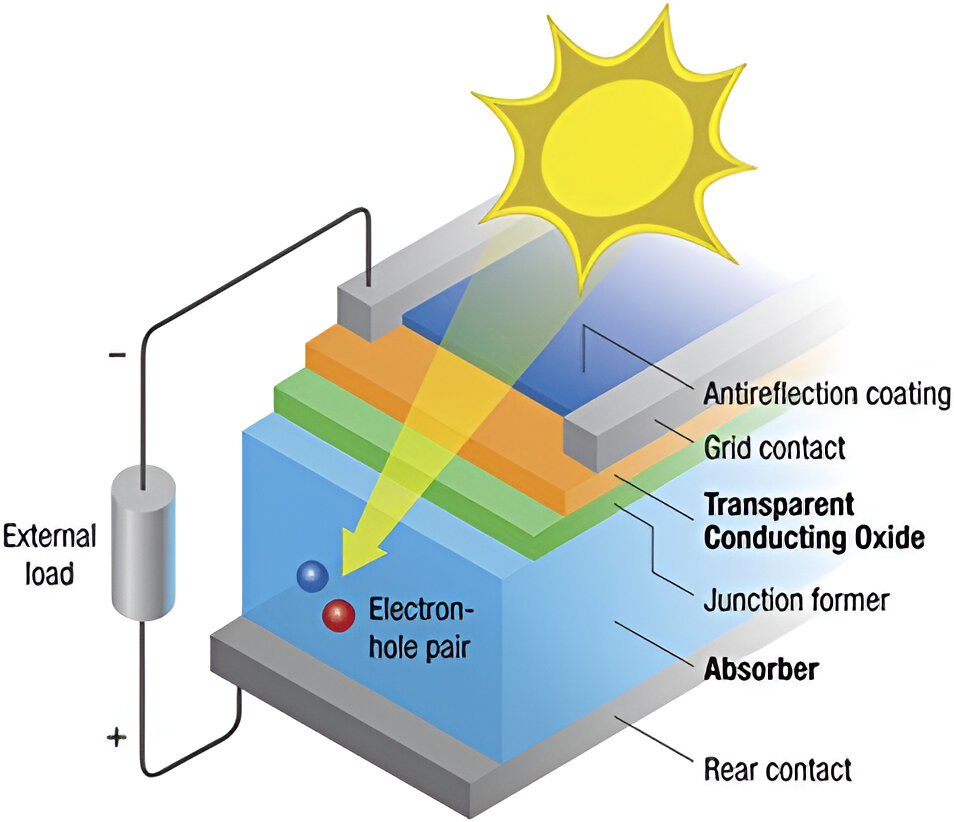
How Organic Solar Cells Work?
Nothing really changes in how light is converted into electricity—it still uses the same photovoltaic effect that powers traditional solar cells. The big difference with organic solar cells is that they use carbon-based organic compounds to capture light and turn it into electricity. But here’s the catch: when we hear “organic,” we often think of something 100% natural, right?
Like “organic-natural-eco-friendly” products in the market, these often come in plastic packaging, which feels a bit ironic. Similarly, these organic solar cells aren’t fully organic either. They actually contain plastic or polymers derived from crude oil. However, there’s hope! These plastics can be swapped out for more eco-friendly materials, like biopolymers, which are much kinder to the environment.
Current Status: Organic solar cells (OSCs) have reached nearly 20% efficiency due to advancements like non-fullerene acceptors (NFAs), making them competitive with traditional technologies. Their flexible, lightweight, and transparent properties make them ideal for applications in building-integrated photovoltaics, wearable electronics, and smart homes. However, challenges such as long-term stability and large-scale production still need to be addressed. Research continues to improve material design and manufacturing processes, with promising potential for broader commercial use.
Also read: Half-Cut vs. Full-Cut Solar Cells: Everything You Need to Know
Conclusion
With Tandem Solar Cells offering higher efficiency, Quantum Dot Solar Cells allowing more energy from less sunlight, and Organic Solar Cells providing a lightweight option, the future of solar energy looks promising.
However, challenges remain, such as making these technologies ready for large-scale use and ensuring they are cost-effective. These innovations are not only the future of solar energy but may soon become a common part of how we power our homes, businesses, and even our gadgets.
It is an exciting time for solar energy, and these new technologies are definitely worth watching!


